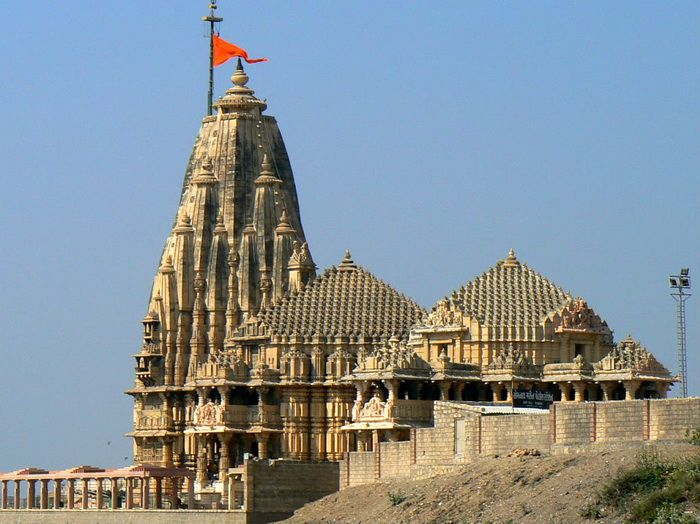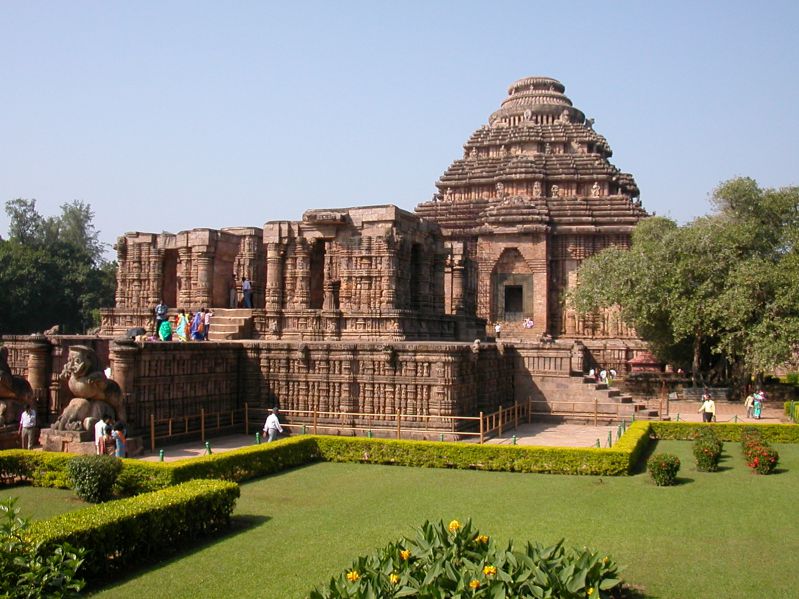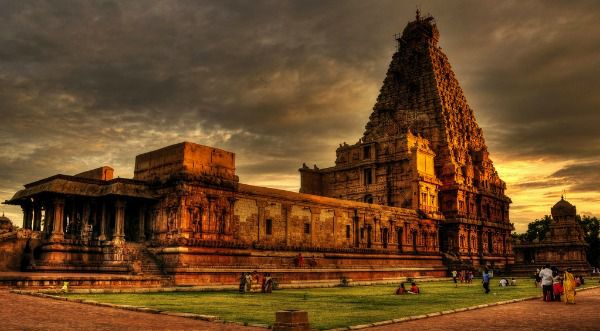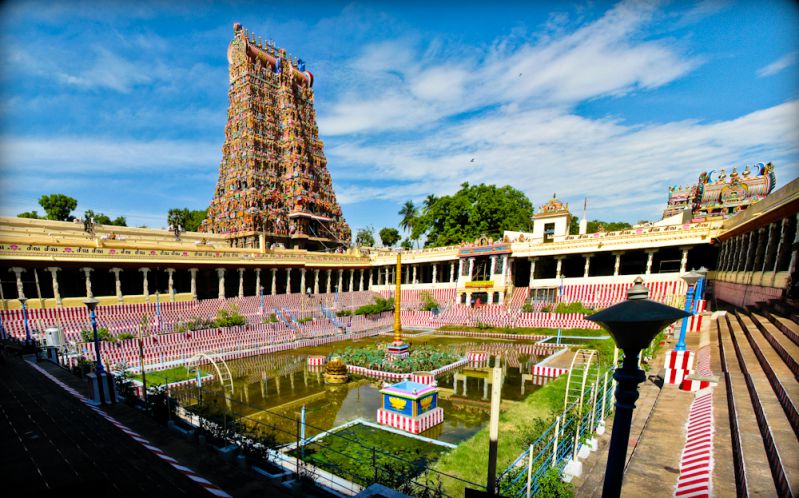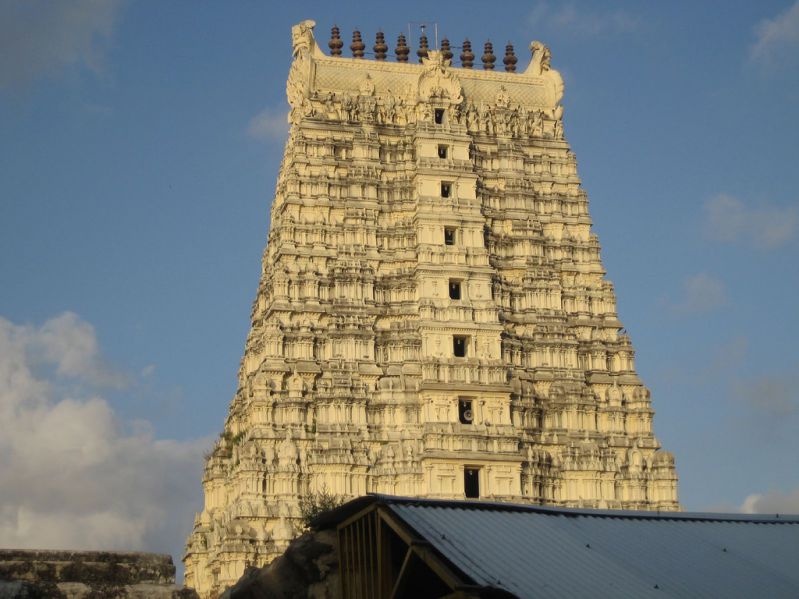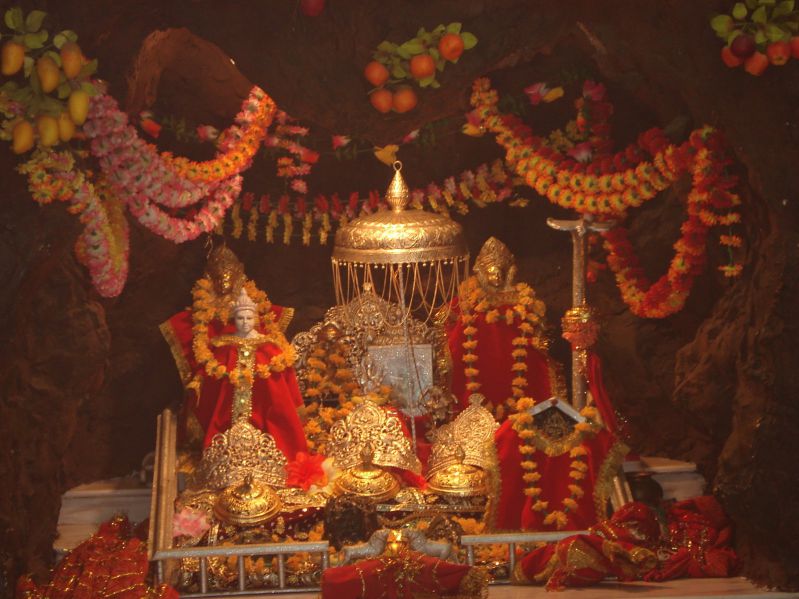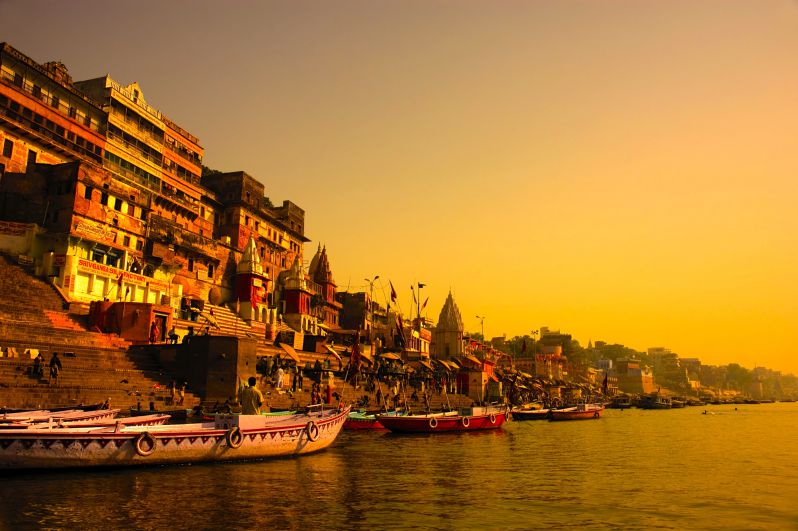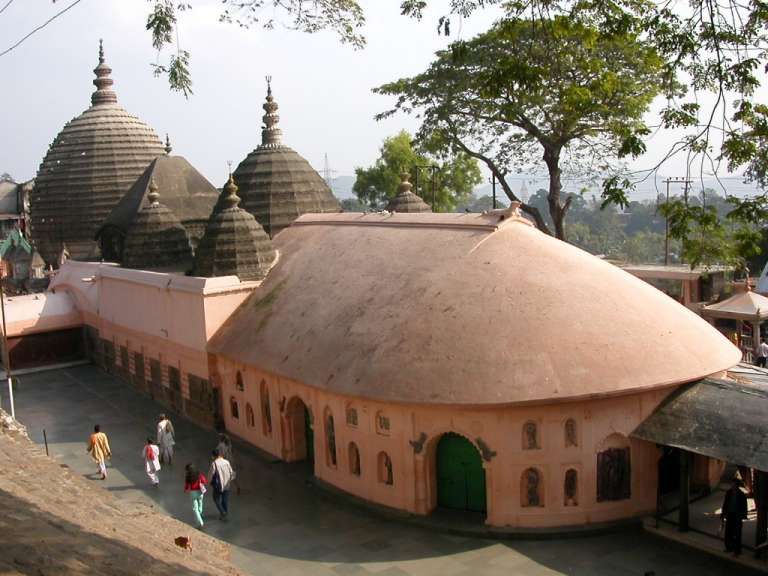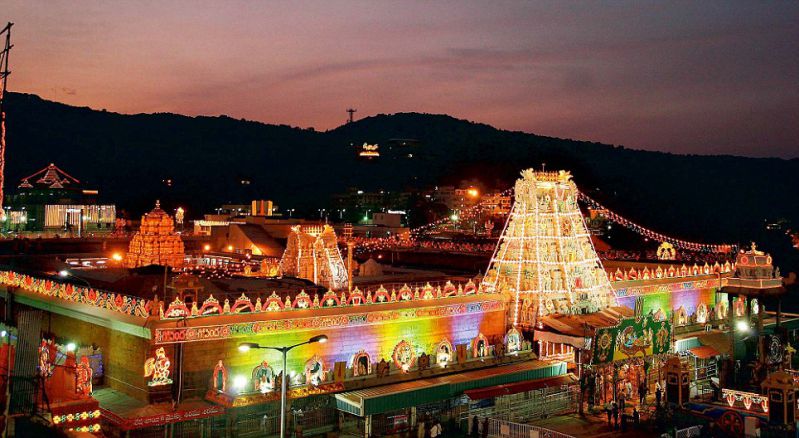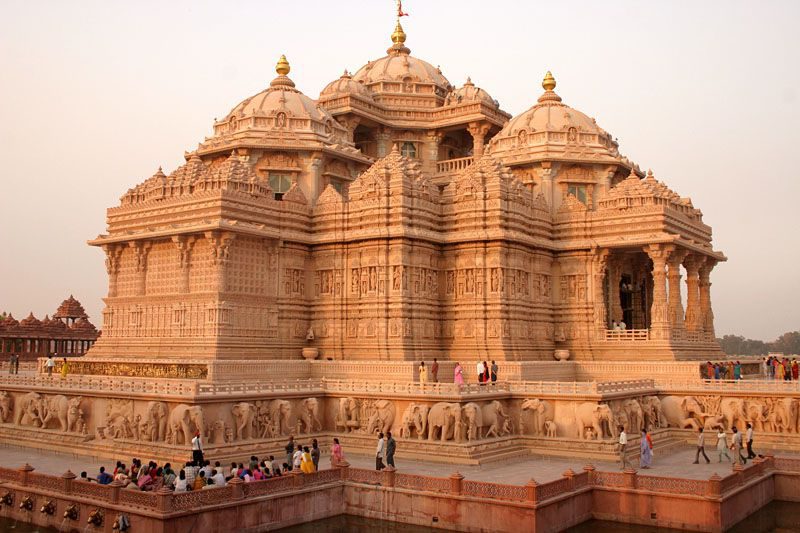No products in the cart.
“The way you feel in the temple is a pattern for how you want to feel in your life”
India is a beautiful country filled with diversity and is rich in cultural values. India is a country with different cultures, different people, different places and a lot to explore. Considering the Cultural diversity in India, India is home to a lot beautiful temples whose architecture will take your breath away. The vivid colors of the different religions residing in India give the country an admirable identity. This is the reason why in every corner of the country you would find a place of worship be it of any religion.
Hinduism has around 900 million followers around the world and thus finding Hindu Temples in abundance in the country shouldn’t be a surprise. Some of them are as ancient as the land itself. Hindu temples have been built in a wide variety of styles that have amazed the onlookers.
Considering the long list of temples in India, here is a list of top 15 mesmerizing and must visit temples in India owing to their popularity, strong faith, history and architectural importance.
15 Famous Temples in India
![]()
Badrinath Temple

Situated close to the Alaknanda River, the Badrinath Temple is located in the Chamoli district, a small town of Badrinath (Uttarakhand). This holy shrine of Lord Vishnu forms a part of the four holiest sites (Char Dham) in Hindu religion. The ancient abode of Lord Vishnu can be visited only between Aprils to November as in the rest of the months the weather is too harsh for undertaking a pilgrimage journey
The Konark Sun Temple

The Sun temple is located in the small town of Konark, which is located in the Puri district of Odisha. This wonder of architecture is dedicated to Lord Sun. And similar to his carriage, the place of worship has been built in the shape of a chariot, which has twelve wheels and is shown as being dragged by the seven horses. Konark Sun temple has a wealthy history to it which has been mentioned in many scriptures and famous writings. The mesmerizing magnificence of the place was best summed up by the Rabindranath Tagore through these words: ‘Here the language of stone surpasses the language of man.’
Brihadeeswarar Temple

This 11th century temple was constructed by the Chola emperor Raja Raja Chola I. Dedicated to Lord Shiva, Brihadeeswarar temple is the biggest temple in India that is situated at Thanjavur city of Tamil Nadu. Cholas are known for their regal and astonishing scale of structures. Made entirely of granite stone, it was constructed as per the principles of Vaastu Shastras and Agamas. The most amazing thing related to the architecture of this UNESCO World Heritage Site is that it doesn’t leave any shadow on the ground at the noon time.
Somnath Temple

Somnath Temple is one of the oldest pilgrimage centers in India and finds mention in the ancient books. Som refers to the ‘Moon God’, thus Somnath means ‘Guardian of the Moon God’. According to a legend, Som got the temple constructed in honor of Lord Shiva as it was Shiva who cured the illness, which was inflicted on him due to his father-in-law’s curse. Somnath Jyotirlinga is also one of the most revered ‘jyotirlinga’ among the 12 jyotirlingas in India. The temple is located in Prabhas Kshetra in Saurashtra (Gujarat). Prabhas Kshetra is also the region in which, it is believed that, Lord Krishna left his earthly body.
Kedarnath Temple

Situated in the Himalayan range of Garhwal area (Uttarakhand), Kedarnath temple is one of the most holy Shiva temples in the world. This holy abode of Shiva is said to be built by the Pandavas to atone for their sins committed during their battle with Kauravs. Bounded by the glaciers and snow-covered peaks and standing at a height of 3,583 m, the temple is closed during winters due to extreme cold and harsh weather conditions. Even the idol of Lord Shiva is shifted to Ukhimath and worshiped there throughout the 5/6 months for which the extreme conditions prevail. The Kedarnath temple is a jyotirlinga temple and also is one of the four sites in the Chota Char Dham pilgrimage of Northern himalayas.
Meenakshi Amman Temple

Meenakshi Amman Temple of Madurai is an architectural marvel and is dedicated to Goddess Meenakshi ( a form of Parvati) and Lord Shiva. According to legend it was the King of Lords, Indra, who discovered the sacred Suyambulingam here in Madurai and decided to enshrine the Suyambulingam there.
The presiding deity is known as Sundareswarar, Meenakshi Sundarar, Somasundarar, Kalyana Sundarar, Shanbaga Sundarar, Attavai Shevagan, Chockalingam, Adiyarku Nallan, Adhiraveesi, Vilayaduvan, Abhideka Chockar, Azhagiya Chockar, Kadambavana Chockar, Puzhugu Neidhu Chockar, Kadambavaneswarar, Karpoora Chockar, Madureswarar, Irayanar, Peralavayar and other names.
The Meenakshi Amman Temple has 5 entrances, quite magnificent and stunning in its architectural panache. The Temple pond, called the Lotus pond, is considered extremely sacred and is believed to have been created by Lord Shiva himself. If the devotees bathe in the waters of this pond of Golden Lotus on Amavasya (new moon) day, the first day of the month, days of eclipse and other auspicious days and worship the Lord, they will be blessed with all their aspirations for success.
Ramanathaswamy Temple

The Ramanathaswamy temple in the holy city of Rameswaram is considered as one of the four holiest pilgrimage places (Char Dhams) of the Hindus. The reason for it being so sacred is the belief that Lord Rama along with his wife Sita first landed on its shore after defeating the demon Ravana (who was also a Brahmin). To seek atonement for killing a Brahmin, Rama wanted to pray to Shiva. Hanuman was sent off to Kailash to bring an idol of the God. In the mean time, Sita made a small lingam. The one made by Sita is called Ramalingam and one brought by Hanuman is called Vishwalingam.
Vaishno Devi

One reaches the holy cave after a trek of 12 km from Katra which is the abode of Vaishno Devi. It is situated in Jammu and Kashmir, near Katra town. It is situated in Jammu and Kashmir, near Katra town. Popular the world over as Moonh Maangi Muradein Poori Karne Wali Mata, which means, the Mother who fulfills whatever Her children wish for, Shri Mata Vaishno Devi Ji resides in a Holy Cave located in the folds of the three peaked mountain named Trikuta (pronounced as Trikoot). Mata Vaishno Devi temple attracts millions of Hindu pilgrims every year and is considered by Hindus as one of the holiest pilgrimages.
The Holy Cave of the Mother is situated at an altitude of 5200 ft. The Yatris have to undertake a trek of nearly 12 km from the base camp at Katra. At the culmination of their pilgrimage, the pligrims are blessed with the Darshan of Mata Vaishno Devi inside the Sanctum Sanctorum. These Darshans are in the shape of three natural rock formations called the Pindies. There are no statues or idols inside the Cave.
Kashi Vishwanath Temple

Kashi Vishwanath temple is considered one of the holiest temples for Hindus. Located in the ancient and holy city of Varanasi, the temple is dedicated to Lord Shiva also known as Vishwanath, the lord of the Universe. The jyotirlinga present in the temple is one among the 12 jyotirlingas of Shiva. Millions of Hindus visit Varanasi every year to have a glimpse of the jyotirlinga. One glimpse of the Jyotirlinga is a soul-cleansing experience that transforms life and puts one on the path of knowledge and bhakti. Vishwanath Jyotirlinga has a very special and unique significance in the spiritual history of India. It is believed that the blessings earned by visiting the other 11 jyotirlingas of Shiva spread across India can be accrued by a single visit to the Kashi Vishwanath Temple.
Many great Hindu saints including Adi Sankaracharya, Goswami Tulsidas, Ramakrishna Paramhansa, Swami Dayananda Saraswati, Swami Vivekananda, Gurunanak etc had visited Varanasi to take bath in the holy water of the Ganga and for the Darshan of the Jyotirlinga. It is believed that the one who takes bath, at least once in the lifetime in the Ganga in the holy city Varanasi, will get Moksha (Salvation).
Khamakhya Temple

The Kamakhya Temple in Guwahati, Assam is one of the oldest of the 51 Shakti Peetha. It is the most important pilgrimage for the Tantric Worshippers. As a form of worship, goats are offered to the Goddess Kamakhya by the devotees who believe that she is the yielder of all desires.
Gangotri Temple

The sacred origin of Ganga is worshipped at Gangotri temple, which is situated in the Uttarkashi district of Uttarakhand. A partially submerged Shivaling lying along the temple in the waters of Bhagirathi signifies the place where God Shiva entangled Ganga in his hair. Built in the 18th century the temple is made from the white granite.
Dwarkadhish Temple

Dedicated to Lord Krishna, also known as Dwarkadhish or King of Dwarka, the Dwarkadhish temple occupies a very special place among the Hindus. The temple is also known by the name Jagat Mandir and is considered a part of the Char Dham circuit. The holy pilgrimage to Char Dham, Dwarka, Rameshwaram, Badrinath and Puri is believed to be a journey every Hindu should undertake during one’s lifetime.
The original temple at Dwarka is believed to have been built by Vajranabha, Lord Krishna’s grandson over the residential place of the Lord more than 2500 years ago. The majestic five-storied structure of Dwarkadhish Temple stands high on the confluence of Gomati River and Arabian Sea. Built with the support of 72 pillars, Dwarkadhish Mandir presents a sight to behold. Elevated to the height of 78.3 meters, the spire of temple dominates the skyline of Dwarka. An eighty-four foot long multicolored flag, adorned with the symbols of the sun and moon, waves from the dome of temple.
Yamunotri Temple

Dedicated to Yamuna River, which is the second holiest river of India, the temple also forms the part of the four Chota Char Dham sites. The area around the Yamunotri temple doesn’t have any motorable roads, so it has to be reached by trekking for a few kilometers. The surroundings of the Yamunotri temple have many hot water springs to the delight of the visiting pilgrims.
Tirupathi Balaji Temple

Located in the hilly town of Tirumala (Andhra Pradesh), the temple is also known as Tirumala Venkateshwara temple. The temple is devoted to Lord Venkateshwara, who is popularly called ‘Balaji’ and is the incarnation of Lord Vishnu. Venkateshwara Tirupati Balaji Temple is the second richest religious site with people offering money and gold to their Lord running into millions, each day. The ancient temple has been visited by the rulers of many grand dynasties of Southern India.
Akshardham Temple

The Akshardham temple is situated near the banks of Yamuna in Delhi. The Indian-ness of the temple is reflected in its resemblance with ancient Indian architecture and the spirituality that the place exudes. The structure has been built of Rajasthani pink stone and Italian Carrara marble. The magnificent temple of Akshardham looks more stunning during the night with the beautifully set lighting arrangements. The principal deity of Swaminarayan faith, Lord Swaminarayan, is the central figure of Akshardham.
For understanding India and its rich cultural legacy, one can start by exploring the temples and take a pilgrimage holiday in India. Mahatma Gandhi said “the essence of all religions is one; only their approaches are different.” Likewise, from the different temples of India, one can realize the essence of the enigmatic land of India.

